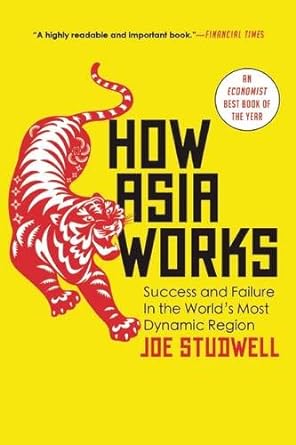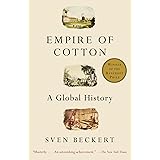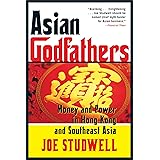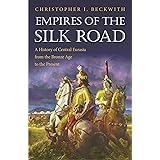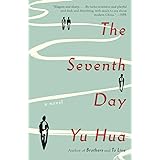
Enjoy fast, free delivery, exclusive deals, and award-winning movies & TV shows with Prime
Try Prime
and start saving today with fast, free delivery
Amazon Prime includes:
Fast, FREE Delivery is available to Prime members. To join, select "Try Amazon Prime and start saving today with Fast, FREE Delivery" below the Add to Cart button.
Amazon Prime members enjoy:- Cardmembers earn 5% Back at Amazon.com with a Prime Credit Card.
- Unlimited Free Two-Day Delivery
- Streaming of thousands of movies and TV shows with limited ads on Prime Video.
- A Kindle book to borrow for free each month - with no due dates
- Listen to over 2 million songs and hundreds of playlists
- Unlimited photo storage with anywhere access
Important: Your credit card will NOT be charged when you start your free trial or if you cancel during the trial period. If you're happy with Amazon Prime, do nothing. At the end of the free trial, your membership will automatically upgrade to a monthly membership.
Buy new:
-43% $11.49$11.49
Ships from: Amazon.com Sold by: Amazon.com
Save with Used - Acceptable
$8.83$8.83





Download the free Kindle app and start reading Kindle books instantly on your smartphone, tablet, or computer - no Kindle device required.
Read instantly on your browser with Kindle for Web.
Using your mobile phone camera - scan the code below and download the Kindle app.

 Audible sample Sample
Audible sample Sample 


How Asia Works Paperback – May 20, 2014

Explore your book, then jump right back to where you left off with Page Flip.
View high quality images that let you zoom in to take a closer look.
Enjoy features only possible in digital – start reading right away, carry your library with you, adjust the font, create shareable notes and highlights, and more.
Discover additional details about the events, people, and places in your book, with Wikipedia integration.
Purchase options and add-ons
An Economist Best Book of the Year
In the 1980s and 1990s many in the West came to believe in the myth of an East-Asian economic miracle, with countries seen as not just development prodigies but as a unified bloc, culturally and economically similar, and inexorably on the rise. In How Asia Works, Joe Studwell distills extensive research into the economics of nine countriesJapan, South Korea, Taiwan, Indonesia, Malaysia, Thailand, the Philippines, Vietnam, and Chinainto an accessible, readable narrative that debunks Western misconceptions, shows what really happened in Asia and why, and for once makes clear why some countries have boomed while others have languished. Impressive in scope, How Asia Works is essential reading for anyone interested in a region that will shape the future of the world.
- Print length400 pages
- LanguageEnglish
- PublisherGrove Press
- Publication dateMay 20, 2014
- Dimensions5.5 x 1.5 x 8 inches
- ISBN-100802121322
- ISBN-13978-0802121325
The Amazon Book Review
Book recommendations, author interviews, editors' picks, and more. Read it now.
Frequently bought together
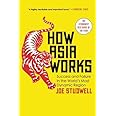
Similar items that may ship from close to you
 Finally, interventions in the financial sector to focus capital on intensive, small-scale agriculture and on manufacturing development provide the third key to accelerated economic transformation.Highlighted by 1,096 Kindle readers
Finally, interventions in the financial sector to focus capital on intensive, small-scale agriculture and on manufacturing development provide the third key to accelerated economic transformation.Highlighted by 1,096 Kindle readers It is that a lot of critical learning in the most successful developing countries takes place outside the formal education sector. It occurs, instead, inside firms.Highlighted by 928 Kindle readers
It is that a lot of critical learning in the most successful developing countries takes place outside the formal education sector. It occurs, instead, inside firms.Highlighted by 928 Kindle readers In Japan, Korea, Taiwan and China, governments radically restructured agriculture after the Second World War, focused their modernisation efforts on manufacturing, and made their financial systems slaves to these two objectives.Highlighted by 918 Kindle readers
In Japan, Korea, Taiwan and China, governments radically restructured agriculture after the Second World War, focused their modernisation efforts on manufacturing, and made their financial systems slaves to these two objectives.Highlighted by 918 Kindle readers
Editorial Reviews
Review
I found the book to be quite compelling. . . . Studwell’s book does a better job than anything else I’ve read of articulating the key role of agriculture in development. . . . A good read for anyone who wants to understand what actually determines whether a developing economy will succeed.”Bill Gates, Top 5 Books of the Year”
Pithy, well-written and intellectually vigorous . . . Studwell’s thesis is bold, his arguments persuasive, and his style pugnacious. It adds up to a highly readable and important book.”Financial Times
Provocative. How Asia Works is a striking and enlightening book A lively mix of scholarship, reporting and polemic.”The Economist
"Very readable.... A fascinating and thoroughly deep account."Bloomberg Radio
Gripping Readers will find Studwell’s informative and balanced report eye-opening.”Publishers Weekly
Consistently engaging.”Booklist
Studwell paints a vivid picture of business life in the region. If a copy of the Korean edition finds its way across the demilitarized zone to Pyongyang we may find we have yet another Asian Tiger in our midst.”Management Today
A solid blend of the descriptive and the prescriptive, with plenty of lessons that will be of interest to Asia hands, investors and policymakers.”Kirkus Reviews
Perhaps my favorite economics book of the year. Quite simply, it is the best single treatment on what in Asian industrial policy worked or did not work, full of both analysis and specific detail, and covering southeast Asia in addition to the Asian tiger winners.’ Definitely recommended, you will learn lots from it, and it will upset people of virtually all ideologies.”Tyler Cowen, Marginal Revolution
Illuminating”Independent (UK)
An interesting analysis of policy decisions that have and haven’t worked . . . a handy guide for anyone interested in one of the world’s fastest developing regions.”The Economic Times (India)
Studwell’s latest book, How Asia Works, is also his most ambitions. . . . Declining to make broad pronouncements or dovetail with doctrine, Studwell demonstrates that the way Asia works isn’t quite as simple as we ever imagined.”Smart Planet
"A landmark work."Asia Times (Bangkok)
Bold and insightful. . . . Essential reading for anyone interested in understanding the ingredients for economic success.”The News International (Pakistan)
About the Author
Product details
- Publisher : Grove Press (May 20, 2014)
- Language : English
- Paperback : 400 pages
- ISBN-10 : 0802121322
- ISBN-13 : 978-0802121325
- Item Weight : 13 ounces
- Dimensions : 5.5 x 1.5 x 8 inches
- Best Sellers Rank: #46,710 in Books (See Top 100 in Books)
- #19 in International Economics (Books)
- #55 in Economic Conditions (Books)
- #85 in Economic History (Books)
- Customer Reviews:
About the author

Discover more of the author’s books, see similar authors, read author blogs and more
Customer reviews
Customer Reviews, including Product Star Ratings help customers to learn more about the product and decide whether it is the right product for them.
To calculate the overall star rating and percentage breakdown by star, we don’t use a simple average. Instead, our system considers things like how recent a review is and if the reviewer bought the item on Amazon. It also analyzed reviews to verify trustworthiness.
Learn more how customers reviews work on Amazon-
Top reviews
Top reviews from the United States
There was a problem filtering reviews right now. Please try again later.
The author starts by discussing Land and agriculture. He starts out by making the observation that the highest efficiency in produce per square meter for agriculture occurs through home farming and that economies of scale might exist from a cost perspective given the cost of labour but does not mean that aggregate produce would be highest if we all farmed. He then discusses how farming in history has been dominated by landlords and the business of farming within a landlord system by rent seeking behaviour that does not sufficiently invest in land improvement. He finally concludes that when human capital is cheap gaining productivity by eradicating rents and equalizing ownership of farm land increases productivity and moves people up the income curve allowing for the first stage of economic growth. Studwell then goes on to discuss how this general idea was understood and implemented in Japan, Korean and Taiwan and in particular how their experiences led to yield improvements. It also discusses how these principles were not followed in Philippines and other parts of south east asia and how the differences in land policy were the first fundamental hurdle for economic developement to take off.
The author then moves on to manufacturing and discusses the concept of infant industries. He discusses the origin of the idea and how creating barriers to entry was understood to be a necessary part of fostering domestic industry. The need to create a system of carrots for successful ventures and sticks to punish failures was shown to be an integral part of successful development policy and the differences between Korean and Malaysia is used as an example to show how competition was needed to keep entrepreneurs more honest. Focusing on exports is shown to be a key to forcing companies up technology curves and putting them in a competetive landscape to perfect the growth process and that preferential credit was a means to facilitate projects like this. Having industrial policy is shown to be more effective when looking at the differences between Korean and Taiwan as an example.
The author then goes on to finance. Having finance controlled by industrial policy rather than nepotistic interests is quite obviously shown to have major impacts on the quality of investment. Southeast asia and crony capitalism are given as examples of how credit was funelled into asset gathering instead of broadening productive capacities. The differences in experience between Indonesia and Korea are given as examples to think about. The liberalization of finance is also discussed and the merits of liberal capital flows vs closed capital accounts are detailed and the author argues that in developement having control over the flow of capital in and out of the country can have massive benefits especially when those flows are hot money.
The author finally discusses China and where it fits in. Its similarity on industrial policy to north asia and taiwan is shown and its history of encouraging state upstream industries to continue to compete and stay competitive is discussed. The author also discusses the failure to reform the agricultural side of the economy and how that is a long run problem that needs to be solved for China to be able to escape the middle income trap. The limits of supporting upstream and midstream activities is discussed and the need for capital allocation to start flowing towards creating consumer brands is considered. The author covers the successful parts of China's growth model as well as the limits of it and considers other asian countries lessons to be heeded.
This is a combination of history and economic policy lessons as a function of that history. It is coherent, interesting and insightful. One finishes it believing that free market capitalism too is dependent on institutional arrangement and market structure. The need to adapt developement strategy to the stage of economic developement is currently in is given to be of critical importance. This reads well and illuminates developent in Asia to the reader. It contains anecdotal stories and economic interpretation. It caters to a wide audience and can be appreciated on many levels.
The most important premise in the book is the need for land reform to fund industrialisation.
By 'land reform' he means distributing land equally among farming families, by taking it off the big landowners.
Land reform does not come easily:
In Japan the first (and initially successful) reform was after the Meiji Restoration, and the second immediately after the Second World War.
In Taiwan it followed the defeat of the Kuomintang (KMT) by the Communists in China. Initially Communist land reform in China was popular with the people, and the KMT were forced to copy it in Taiwan to achieve some popularity with the locals.
In South Korea Syngman Rhee's government resisted land reform until it was nearly swept into the sea by Kim Il Sung's invasion. When the South Koreans retook Korea, they found Communist land reform was very popular with the farmers, and were forced to accept it.
The ensuing agricultural boom gave these governments the cash to fund industrialisation. Studwell shows how they largely got it right, by copying the 19th Century Prussian model.
(In China and North Korea the agricultural boom ended when the Communists collectivised the farms.)
In South East Asia land reform never took place, probably because events were not dramatic enough to force it to happen. Consequently large landowners live very well, while ordinary farmers are very poor, and agricultural productivity is low.
In describing industrialisation, Studwell compares the successful Japan/South Korea/Taiwan model of competition between state supported companies (with the creative destruction of the failure of some) and the discipline of serving export markets versus the failure to introduce competition and export discipline in South East Asia. The outcome is exemplified by Toyota/Honda/Hyundai versus Proton.
The failings in South East Asia described in this book are pretty much as described in Studwell's earlier "Asian Godfathers".
'How Asia Works' attracted a fair amount of criticism here in Hong Kong for appearing to advocate financial repression (paying derisory interest rates on household savings, enforced by exchange controls) and state planning - we have a very good vantage point of this process in China, and worry about the effects - for example an uncontrolled shadow banking system and misallocation of easy credit by State Owned Enterprises.
Studwell does not advocate this as a universal panacea - he points out the problems that South Korea had, and that they were lucky to get away with it - and that the system gets a country to a certain level of development, after which it is necessary to modernise - which may not always work - as in Japan.
His conclusion is that South East Asia will probably never fulfil its potential, and that China might.
This book offers a helpful political-economic model for those attempting to understand Asia generally, and, most importantly, China.
Top reviews from other countries
If you get this book, you'll be thoroughly educated.


